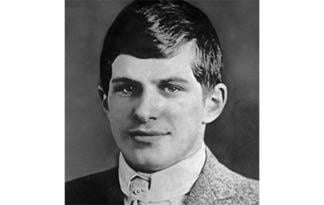William James Sidis is believed to be one of the smartest people who have ever lived. The problem is, his IQ was never officially measured. According to his sister, his score was “the very highest that had ever been obtained”. Sadly, any records of his IQ testing have been lost to history.
What makes William James so smart?
While his IQ tests have been lost to history, some records show that he had an IQ between 250 and 300. Just as a comparison, Stephen Hawking had an IQ of 160, Albert Einstein had an IQ between 160 and 190, and Gary Kasparov, the famous chess player, scored 194.At the moment, the highest official test has been the one of Terence Tao, 43 year old Australian-American who scored between 225 and 230, and holds the James and Carol Collins chair in mathematics at the University of California, Los Angeles.
![]()
But back to William James Sidis. When he was just 5 years old, he could use a typewriter, and had learnt to speak Latin, Greek, Russian, French, German, and Hebrew. He applied for Harvard at the age of 6, but was denied admission. The university claimed the he was “too emotionally immature” at the time to allow him admission. However, when he was 11 years old, Harvard was forced to accept him. After that, he gave his well-received first lecture on 4-dimensional physics. He was the youngest person to ever enroll at Harvard. His mastery of higher mathematics was incredible. He was praised by everyone, with MIT physics professor Daniel F. Comstock saying “his method of thinking is real intellect. He doesn’t cram his head with facts. He reasons”. William began taking a full-time course load in 1910 and earned his Bachelor of Arts degree, cum laude, on June 18, 1914, at the age of just 16 years old. Compared to current students who often turn to writing services for additional help with university assignments, including the Essays.EduBirdie.com, which provides a variety of study assistance. But he didn’t need it, his IQ was incredible.
After graduation, he became a mathematics teaching assistant at Rice University in Houston, Texas, at the age of 17. He was a graduate fellow working toward his doctorate. There, he taught three classes, including Euclidean geometry, non-Euclidean geometry, and trigonometry. He even wrote a textbook for the Euclidean geometry course in Greek. He stayed there for less than a year, because he was frustrated with the department, and treatment by students older than he was.
Fun fact: When he graduated, he told reporters he wanted to live the perfect life, which meant living in seclusion. He vowed to remain in celibate and never to marry, as he said women did not appeal to him. However, later, he developed a strong affection for a young woman named Martha Foley.
Later life
In 1919, after he withdraw from law school, he was arrested for participating in a socialist May Day parade in Boston that turned violent. He was sentenced to 18 months in prison. During his trial, he stated that “he had been a conscientious objector to the World War I draft, a socialist, and did not believe in god like the big boss of Christians, but rather in something that is in a way apart from a human being. He later developed his own libertarian philosophy based on individual rights.
In 1944, at the age of 46, Sidis died from a cerebral hemorrhage. His father had died from the same disease in 1923.
Notable publications and legacy
Sidis wrote on subjects like cosmology, American Indian history, anthropology, philology, and transportation systems. He covered a broad range of subjects. Some of his main ideas focused on cosmological reversibility and social continuity.
He also coined a term, peridromophile, one that he used for people fascinated with transportation research and streetcar systems. In one of his notable publications, “The Animate and the Inanimate”, which he published in 1925, he predicted the existence of regions of space where the second law of thermodynamics operated in reverse to the temporal direction that we experience in our local area. He claimed that everything outside of what we today call a galaxy would be such a region. According to his notes, the matter in this region would not generate light.
In 1930, he received a patent for a rotary perpetual calendar, one that included leap years. He even created a language called Vendergood, in a book he wrote at the age of 8. The language was based on Latin and Greek, with some inspiration from German, French, and other Romance languages. There were eight moods in the language: indicative, potential, imperative absolute, subjunctive, imperative, infinitive, operative, and his own strongeable.
What is IQ?
IQ is short for “intelligence quotient”. It has become the go-to term when we discuss a person’s mental abilities. When we discus and measure someone’s intelligence, the debate is whether that person has any control over his IQ whatsoever. Some people say it is affected by the genes they inherit, while others believe the IQ can be nourished through hard work.
IQ is nothing but a number that you score after taking one of the many standardized tests to measure your intelligence. The general score of 95% of the population ranges between 70 and 130. There are a few different classifications. The Stanford-Binet scale of Human Intelligence is the most commonly used one. According to this scale, a person with a score higher than 145 is considered a genius.



